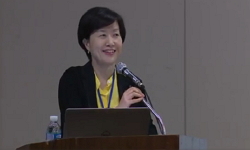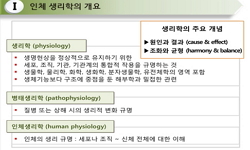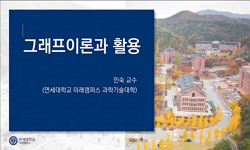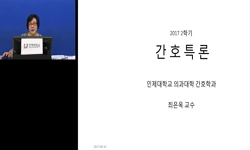This study is a comprehensive examination on the various issues regarding the historical evidence of Jangar, a famous Mongolian epic. The objective of this study is to examine the historical background, birthplace and the period of Jangar's foundation...
http://chineseinput.net/에서 pinyin(병음)방식으로 중국어를 변환할 수 있습니다.
변환된 중국어를 복사하여 사용하시면 됩니다.
- 中文 을 입력하시려면 zhongwen을 입력하시고 space를누르시면됩니다.
- 北京 을 입력하시려면 beijing을 입력하시고 space를 누르시면 됩니다.

장가르(Jangar)의 역사적 근거 논의에 대한 비판적 검토 = A Critical Examination of the Debate on the Historical Evidence of Jangar
한글로보기부가정보
다국어 초록 (Multilingual Abstract)
This study is a comprehensive examination on the various issues regarding the historical evidence of Jangar, a famous Mongolian epic. The objective of this study is to examine the historical background, birthplace and the period of Jangar's foundation based on such an interrogation. Through this, the study confirms multiple factors as listed below.
Firstly, regarding the historical background of Jangar, comprehending the epic in relation to a particular history, historical figure, and historical period is problematic. In other words, the writer believes that since Jangar is a literary text inflected by literary imagination, not a historical text, the effort to find any corresponding historical background should be limited to a certain degree. Secondly, the writer examines Jangar’s place of origin in relation to the northern Xinjiang province, Kalmyk, and Mongolia, which are the primary distribution regions of the epic. In consideration of various issues, such as the correlation between Jangar and the distribution areas, the regional names that appear in the epic, Jangarch, the different version of the epic, and oral data, the writer finds the founding region of Jangar to be the residence of Oirad located in the northern Xinjiang province, China. Thirdly, while the writer agrees with other scholars on the views that Jangar had evolved into such a text for over a long time period, the writer finds that the major part of the epic was established right after Buddhism was introduced to Mongolia in the late 16th century.
Discussing the historical evidence of Jangar might be time consuming and unnecessary as it does not lead to any clear conclusion. Despite such a limitation, the writer is interested in this issue for three reasons: first, the necessity to organize the unresolved issues in relation to the epic at the time when the research on Jangar is taking a momentum; second, the different views found in previous researches; last, the risk of incorrectly explaining the social life, the figure of hero, and cultural phenomenon reflected in the epic when the period of founding is erroneously confirmed. However, as most research of this type has been, the writer finds it unsatisfying for not having reached a definitive conclusion.
국문 초록 (Abstract)
본 연구는 몽골의 저명한 영웅서사시 <장가르>의 역사적 근거 논의에 대한 제반 사항을 종합적으로 고찰하고, 이를 토대로 <장가르>의 역사적 배경과 발생 지역 및 성립 시기를 검토...
본 연구는 몽골의 저명한 영웅서사시 <장가르>의 역사적 근거 논의에 대한 제반 사항을 종합적으로 고찰하고, 이를 토대로 <장가르>의 역사적 배경과 발생 지역 및 성립 시기를 검토하는데 목적을 두고 있다. 연구를 통하여 필자는 다음 몇 가지 사항을 확인하였다.
첫째 필자는 <장가르>의 역사적 배경과 관련하여 본 서사시를 특정 역사, 특정 역사인물, 특정 역사시기와 관련지어 파악하는 것은 문제가 있다고 보았다. 즉 <장가르>가 역사서가 아니고 문학적 상상력이 동원된 문학작품이라는 점에서 본 서사시의 역사적 배경을 찾으려는 노력은 일정한 범위에서 제한될 필요가 있다는 것이 필자의 생각이다. 둘째 필자는 <장가르>의 발생지역을 서사시의 주요 분포지역인 신장 북부, 칼미크공화국, 몽골국과 관련지어 살펴보았다. <장가르>와 분포지역의 연관성, 서사시에 등장하는 지역명칭, 장가르치와 서사시의 異本, 구전자료 등 제반사항을 고려하여 필자는 <장가르>의 발생지역을 중국 신장 북부 옛 오이라드인들의 거주지로 보았다. 셋째 필자는 <장가르>가 오랜 기간에 걸쳐 성립 발전해 왔을 거라는 선학들의 견해에 동의하지만, 서사시에 등장하는 지역명칭과 종교적 요소 등을 고려하여 <장가르>의 주요 부분이 16세기 말 몽골 땅에 불교가 들어온 직후에 성립되었을 것으로 보았다.
<장가르>의 역사적 근거에 대한 논의는 뚜렷한 결론을 낼 수 없는 소모적인 논쟁이자 蛇足일 수 있다. 그럼에도 불구하고 필자가 이 문제에 관심을 둔 것은 세 가지 이유 때문이다. 첫째는 이제 막 <장가르> 연구가 본격화되어 가는 참에 본 서사시와 관련한 미해결 과제에 대한 정리의 필요성 때문이다. 둘째는 이 주제와 관련한 기왕의 연구에 대한 이견 때문이다. 셋째는 발생 시기를 잘못 확정할 경우 서사시에 반영된 사회생활, 영웅의 형상, 문화현상 등을 잘못 설명할 수 있기 때문이다. 그러나 이런 부류의 연구가 그렇듯 본 논문 역시 확실한 결론을 도출하지 못한 점을 매우 아쉽게 생각한다.
참고문헌 (Reference)
1 게오르그 빌헴름 프리드리히 헤겔, "헤겔의 미학강의 3" 은행나무 2010
2 서대석, "한반도와 중국 동북 3성의 역사 문화" 서울대학교출판부 2000
3 니콜라이 체데노비치 비트케예프, "장가르 2" 서울대학교출판문화원 2016
4 니콜라이 체데노비치 비트케예프, "장가르 1" 한길사 2011
5 이평래, "실크로드의 삶과 종교" 사계절 2006
6 V.A. 랴자노프스키, "몽골의 관습과 법" 혜안 1996
7 이안나, "몽골 영웅서사시 <장가르>의 기원 문제" 한국몽골학회 (34) : 261-289, 2013
8 박종성, "몽골 구비영웅 서사시<장가르>의 영웅적 성격" 동아시아고대학회 (9) : 171-206, 2004
9 조동일, "동아시아 구비서사시의 양상과 변천" 문학과지성사 1997
10 崔元午, "동아시아 구비서사시 이론 구축을 위한 사례 점검(Ⅰ) - 몽골 영웅서사시 <장가르>를 중심으로 -" 한국구비문학회 (16) : 497-524, 2003
1 게오르그 빌헴름 프리드리히 헤겔, "헤겔의 미학강의 3" 은행나무 2010
2 서대석, "한반도와 중국 동북 3성의 역사 문화" 서울대학교출판부 2000
3 니콜라이 체데노비치 비트케예프, "장가르 2" 서울대학교출판문화원 2016
4 니콜라이 체데노비치 비트케예프, "장가르 1" 한길사 2011
5 이평래, "실크로드의 삶과 종교" 사계절 2006
6 V.A. 랴자노프스키, "몽골의 관습과 법" 혜안 1996
7 이안나, "몽골 영웅서사시 <장가르>의 기원 문제" 한국몽골학회 (34) : 261-289, 2013
8 박종성, "몽골 구비영웅 서사시<장가르>의 영웅적 성격" 동아시아고대학회 (9) : 171-206, 2004
9 조동일, "동아시아 구비서사시의 양상과 변천" 문학과지성사 1997
10 崔元午, "동아시아 구비서사시 이론 구축을 위한 사례 점검(Ⅰ) - 몽골 영웅서사시 <장가르>를 중심으로 -" 한국구비문학회 (16) : 497-524, 2003
11 宝音和西格, "關于《江格爾》硏究中的幾個理論問題" (4) : 1991
12 宝音巴圖, "論史詩《江格爾》中的薩滿敎" (1) : 2000
13 馬大正, "衛拉特蒙古史綱" 新疆人民出版社 2006
14 李逸帆, "蒙古族衛拉特部英雄史詩《江格爾》硏究綜述" (20) : 2015
15 李逸帆, "蒙古族衛拉特部英雄史詩《江格爾》硏究綜述" (20) : 2015
16 榮蘇赫, "蒙古族文學史(第一卷)" 內蒙古人民出版社 2000
17 金峰, "江格爾黃四国" 內蒙古文化出版社 1995
18 "江格爾的故鄕"
19 雷玉華, "江格爾文化—和布克賽爾縣文化强縣的戰略核心" (5) : 2012
20 "江格尔"
21 賈木査, "校勘新譯史詩《江格爾》" 新疆人民出版社 2005
22 孟克, "從《江格爾》的分布情況論症其産生定型的地域與時間" (3) : 2001
23 仁欽道爾吉, "國內外《江格爾》硏究槪況" 中國民族文學網
24 賈木査, "史詩《江格爾》硏究新進展" (4) : 2007
25 賈木査, "史詩《江格爾》深淵" 新疆人民出版社 1996
26 仁欽道爾吉, "再論《江格爾》》産生年代" (2) : 1991
27 M. L. 乞齊科夫, "作爲歷史資料的英雄史詩《江格爾》" (1) : 1991
28 李建, "佛敎文化對《江格爾》的影響" (5) : 2004
29 蓮見治雄, "チンギスㆍハンの傳說" 角川書店 1993
30 이평래, "『몽골-오이라드 법전』의 재검토" 중앙아시아학회 16 : 79-103, 2011
31 仁欽道爾吉, "《江格爾》論" 內蒙古人民出版社 1994
32 陳麗娜, "《江格爾》與蒙古族宗教文化之關係探析" 中國石油大學 2014
33 阿婧斯, "《江格爾》眞實性問題硏究-以伊犁昭蘇縣格登村爲例" (4) : 2016
34 格日勒扎布, "《江格爾》産生的前提與歷史文化要因" (2) : 1990
35 阿尔丁夫, "《江格爾》産生和基本形成的時代初探-兼談《江格爾》創作權歸屬問題-" (1) : 1986
36 Bovrovnikov, A. A., "“Djangar”, Vestnik Russkogo geograficheskogo obshestva za 1854 g ., SPb., ch. XII, Kn. 5"
37 Gejin, Chao, "The Oirat Epic Cycle of Jangar" 16 (16): 2001
38 Sodnom, B., "Mongolyn utga zokhiolyn khögjliin tüükhchilsen tölöv" (12) : 1947
39 Damdinsüren, Ts, "Mongolyn uran zokhiolyn toim, khoyor dugaar devter(17-18 zuuny üe)" Shinjlekh ukhaany akadrmiin khevlel 1976
40 Damdinsüren, Ts, "Mongolyn nuuts tovchoo" Ulsyn Khevleliin Gazar 1957
41 Burdkov, A. B., "Mongol ardyn baatarlag tuul’syn uchir" Shinjlekh ukhaany akademiin khevlel 1966
42 Bladimirtsov, B, "Mongol ardyn baatarlag tuul’syn uchir" Shinjlekh ukhaany akademiin khevlel 1966
43 Bayasgalan, T., "Jangaryn tuuliin khev shinjiin khar’tsuulsan sudalgaa" Soyombo 2010
44 Erdenebayar, J., "Jangaryn tarkhats, Tüünii gazarzüin khev shinjüüd" Soyombo 2010
45 Batjargal, Ba, "Jangaryn sudlal" Soyombo 2016
46 Bayasgalan, T., "Jangaryn khallh khuvilbaryn garal ulamjlal, kharltsaa kholboony asuudal" (24) : 2008
47 Bayasgalan, T., "Jangar tuul’ sudlal" Soyombo 2011
48 Khorloo, P., "Jangar tuul’ sudlal" Soyombo 2011
49 Mönkhöö, B., "Jangar tuuliin tüükhen ündes" 호브드대학 2010
50 Narantuya, R., "Jangar tuuliin khögjil khuv’salyn asuudal" 15 : 1986
51 Dügersüren, T.(Khalimag khelees Mongol khelend buulgasan), "Jangar" Ulsyn khevleliin khereg erkhlekh khoroo 1963
52 Heissig, W., "Historical Realities and Elements in the Mongol Heroic Epic" 1987
53 Damdinsüren, Ts., "Geseriin tuujiin tüükhen ündes , Oros khelees orchuulsan A.D. Tsendina/Khyanan nairuulsan L. Khürelbaatar"
54 Kichikov, A, "Geroicheskii epos “Djangar”" Kamytskoe knijnoe isdatel’stvo 1974
55 Kozin, S.A., "Epos mongol’skikh narodov" Isdatel’stvo AN SSSR 1948
56 Kozin, S.A., "Djangariada, Geroicheskaya poema kalmykov" Isdatel’stvo AN SSSR 1940
57 Bergmann, Benjamin, "Benjamin Bergmanns nomadische Srreifereien unter den Kalmüken in den Jahren 1802 und 1803, Vol. 4" C.J.G. Hartmann 1805
58 오트공바야르, "<조웅전>과 <장가르>의 비교연구 : 영웅의 형상을 중심으로" 서울대학교 대학원 2009
동일학술지(권/호) 다른 논문
-
박록주 명창의 판소리 세계-음반 취입, 공연 활동, 단체 활동을 중심으로-
- 국립민속박물관
- 최동현
- 2018
- KCI등재
-
무대-위의-굿考: 민속예술로 무속 의례의 연행과 기술에 관한 소고
- 국립민속박물관
- 최학락
- 2018
- KCI등재
-
- 국립민속박물관
- 이성운
- 2018
- KCI등재
-
사진과 회고로 보는 1900년대 전반기 북간도 한인의 장례문화
- 국립민속박물관
- 김시덕
- 2018
- KCI등재
분석정보
인용정보 인용지수 설명보기
학술지 이력
| 연월일 | 이력구분 | 이력상세 | 등재구분 |
|---|---|---|---|
| 2022 | 평가예정 | 재인증평가 신청대상 (재인증) | |
| 2019-06-07 | 학회명변경 | 영문명 : 미등록 -> National Folk Museum of Korea |  |
| 2019-01-01 | 평가 | 등재학술지 유지 (계속평가) |  |
| 2016-01-01 | 평가 | 등재학술지 선정 (계속평가) |  |
| 2015-12-01 | 평가 | 등재후보로 하락 (기타) |  |
| 2011-01-01 | 평가 | 등재학술지 유지 (등재유지) |  |
| 2009-01-01 | 평가 | 등재학술지 유지 (등재유지) |  |
| 2006-01-01 | 평가 | 등재학술지 선정 (등재후보2차) |  |
| 2005-05-27 | 학술지등록 | 한글명 : 민속학연구외국어명 : Korean Journal of Folk Studies |  |
| 2005-01-01 | 평가 | 등재후보 1차 PASS (등재후보1차) |  |
| 2003-01-01 | 평가 | 등재후보학술지 선정 (신규평가) |  |
학술지 인용정보
| 기준연도 | WOS-KCI 통합IF(2년) | KCIF(2년) | KCIF(3년) |
|---|---|---|---|
| 2016 | 0.5 | 0.5 | 0.44 |
| KCIF(4년) | KCIF(5년) | 중심성지수(3년) | 즉시성지수 |
| 0.44 | 0.39 | 1.048 | 0.13 |





 KCI
KCI







